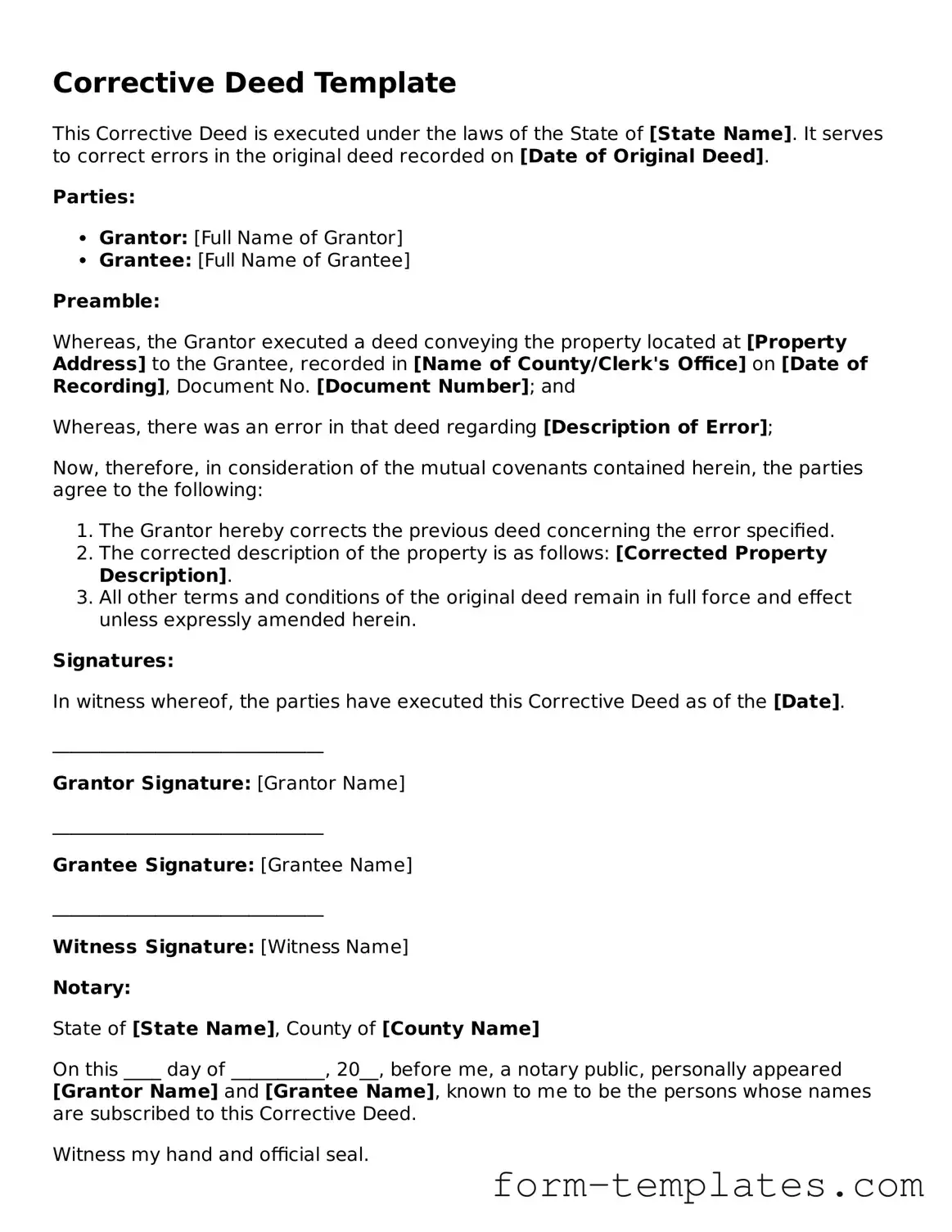Corrective Deed Template
This Corrective Deed is executed under the laws of the State of [State Name]. It serves to correct errors in the original deed recorded on [Date of Original Deed].
Parties:
- Grantor: [Full Name of Grantor]
- Grantee: [Full Name of Grantee]
Preamble:
Whereas, the Grantor executed a deed conveying the property located at [Property Address] to the Grantee, recorded in [Name of County/Clerk's Office] on [Date of Recording], Document No. [Document Number]; and
Whereas, there was an error in that deed regarding [Description of Error];
Now, therefore, in consideration of the mutual covenants contained herein, the parties agree to the following:
- The Grantor hereby corrects the previous deed concerning the error specified.
- The corrected description of the property is as follows: [Corrected Property Description].
- All other terms and conditions of the original deed remain in full force and effect unless expressly amended herein.
Signatures:
In witness whereof, the parties have executed this Corrective Deed as of the [Date].
_____________________________
Grantor Signature: [Grantor Name]
_____________________________
Grantee Signature: [Grantee Name]
_____________________________
Witness Signature: [Witness Name]
Notary:
State of [State Name], County of [County Name]
On this ____ day of __________, 20__, before me, a notary public, personally appeared [Grantor Name] and [Grantee Name], known to me to be the persons whose names are subscribed to this Corrective Deed.
Witness my hand and official seal.
_____________________________
Notary Public Signature:
My Commission Expires: ________________
